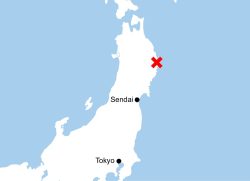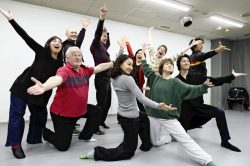16:19 JST, September 11, 2024
Seventy-nine years have passed since the atomic bombings, and the victims have aged greatly. The central and local governments need to broadly recognize the harm caused by the atomic bombings and open the way for relief as soon as possible.
The Nagasaki District Court has ruled in a case in which 44 people who were exposed to the atomic bombing in Nagasaki, but had not been officially recognized as hibakusha atomic bomb survivors, had demanded that the Nagasaki prefectural and city governments issue them atomic bomb survivor’s certificates. The ruling officially recognized 15 of the plaintiffs as hibakusha and ordered the governments to issue them the certificates.
The plaintiffs and others were not far from the hypocenter at the time of the atomic bombing, but they were not officially recognized as hibakusha because they were outside the area of radiation exposure designated by the central government. These people, classified as hibaku taikensha, have not been issued the certificates. The support they receive differs from that of officially recognized hibakusha, who in principle receive free medical care.
The ruling acknowledged that so-called black rain containing radioactive materials fell in three villages outside the government-designated area of radiation exposure, mainly based on a survey conducted around 1999 in which the prefectural and city governments collected statements from local residents. Based on that acknowledgement, the court said denying issuance of the certificates was “significantly lacking in rationality in light of socially accepted norms.”
In the case of the Nagasaki atomic bombing, black rain fell over a limited area, and there are few research materials available. For this reason, the ruling emphasized the past statements of residents, leading to a certain level of relief for the victims.
However, the court rejected the claims of the remaining 29 plaintiffs, saying there was no evidence that radioactive materials fell. The court also did not recognize the effects of the ash that fell over a wide area after the atomic bombing.
In 2021, the Hiroshima High Court ruled in a case involving the atomic bombing of Hiroshima that people who were exposed to black rain were hibakusha, and officially recognized all the plaintiffs as hibakusha. The central government accepted the ruling and the case was finalized.
Since then, the central government has established new standards and introduced a system under which people are recognized as hibakusha if it cannot be denied that they were exposed to black rain and if they are suffering from cancer or other diseases. However, hibaku taikensha in the Nagasaki case have been excluded from the relief program because of a lack of objective records.
The Atomic Bomb Survivors’ Assistance Law imposes on the central government the responsibility of providing compensation and relief for the unique war damage caused by atomic bombings. Nevertheless, mechanically delineating the target relief area and narrowing the scope of relief may not be in keeping with the law’s purpose.
In August, Prime Minister Fumio Kishida met with hibku taikensha in Nagasaki City and instructed Health, Labor and Welfare Minister Keizo Takemi to work toward a reasonable solution. There are 6,300 hibaku taikensha in Nagasaki, and there is a political responsibility to promptly take steps to provide relief.
If the area where radioactive materials fell is too strictly defined, relief for the actual damage will become uncertain. It is hoped that the central government, in cooperation with the prefectural and city governments, will consider a system that can provide relief to as many patients suffering from ailments as possible.
(From The Yomiuri Shimbun, Sept. 11, 2024)
"Editorial & Columns" POPULAR ARTICLE
-

Artificial Intelligence Expands Possibilities for Foreign Language Learners
-

Build Intellectual, Physical Strength, As Well As Communicative Power / Japan Should Move from Beneficiary to Shaper of World Order
-

Global Economy in Turmoil: Prevent Free Trade System from Going Adrift / Risks to Financial Markets Must Be Heeded
-

Japan-China Strain Set to Persist as Beijing Officials Self-Interestedly Bash Tokyo; Takaichi Unlikely to Back Down
-

French and German Ambassadors to Japan Call for Democracies to Unite in Defense against Russian Disinformation
JN ACCESS RANKING
-

As Chinese Tourists Shun Japan, Hotels and Stores Suffer
-

Osaka-Kansai Expo’s Economic Impact Estimated at ¥3.6 Trillion, Takes Actual Visitor Numbers into Account
-

Japan Govt Adopts Measures to Curb Mega Solar Power Plant Projects Amid Environmental Concerns
-

BOJ Gov. Ueda: Highly Likely Mechanism for Rising Wages, Prices Will Be Maintained
-

Economic Security Panels Debate Supply Chains, Rare Earths; Participants Emphasize Importance of Cooperation Among Allies





















